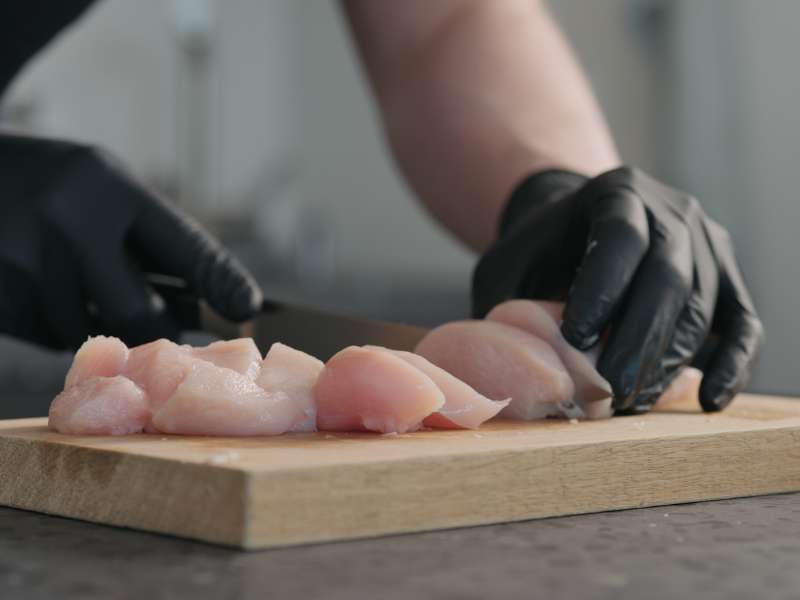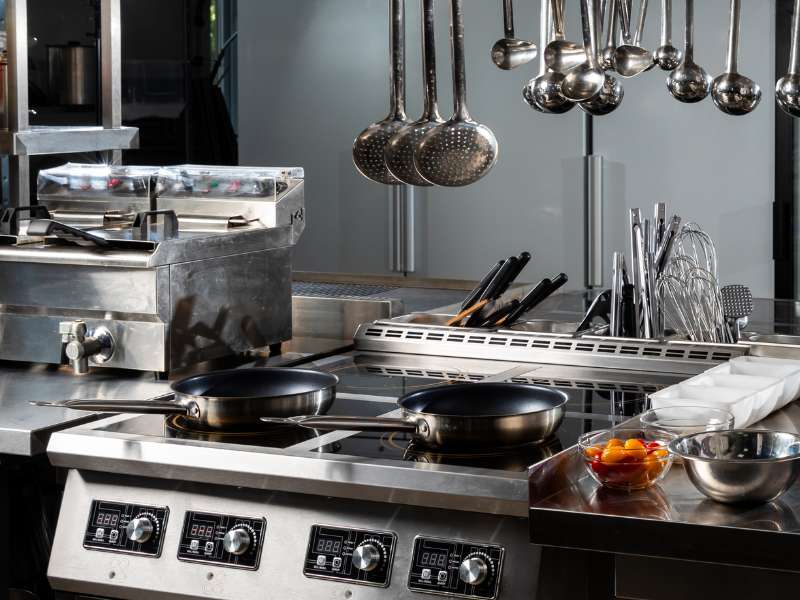Food cost control solutions can improve your bottom line
There are a number of factors that affect food cost negatively but also several solutions to overcome these issues. Incorporating solutions will help control your food cost and generate more profit. These are easy to implement and can be the difference between success and failure in this competitive industry.
Over-Portioning Food
This is a very common issue that can have a negative impact on your bottom line. For example, say you portioned a dish to serve 4 oz. of ham, two slices of tomatoes, a cup of shredded lettuce and so forth. When your staff instead puts 5 oz. of ham and an extra slice of tomato or a handful of lettuce on the plate, those extras are not being paid for in terms of what you are charging for the dish. When this happens, your food cost can jump several points, impacting profit in a negative fashion.Solutions:
- Pre-portion the ingredients used to produce each item. Use portion control devices for service and production of menu items, such as ladles, portion scoops, scales, measuring spoons, etc.
- Train your managers to simply quality check the food on each shift before service to make sure portion standards are being met. Have your managers look at every plate of food before it goes out to look for consistency.
- Purchase products that provide portion consistency, for example fabricated steaks.
Yield Loss Percentage Not Being Applied
Yield loss refers to the part of a food product that is being thrown away, rather than being used. Let’s say you buy a carrot that cost $1. You peel the carrot, cut the tip and stem off, then discard them. This accounts for 15% of the carrot. The carrot’s yield loss is then 15%, meaning that the carrot actually costs $1.15 instead of $1.Calculating the correct unit cost by applying yield loss to items helps get the accurate cost per portion before you apply your food cost %, allowing you to set a more accurate menu price. Not doing this can cause a profit loss to be substantial.Solutions:
- Make sure to do a yield loss on food items. It helps if you are more comfortable doing your own fabrication and productions, such as cutting your own steaks, breaking down whole heads of lettuce, or dicing your own onions.
- Consider purchasing fabricated items that provide 100% yield. The yield loss has already been applied to cost by the vendor. This also cuts labor out of the equation in producing these items.
- Don’t trick yourself into thinking you will always be able to make your own stock with vegetable scraps or grind your own meat with meat scraps. Often you won’t produce enough meat scraps to meet your needs.
Inventory/Purchasing Standards
Without knowing inventory, you will always either over buy, which will leave dead money sitting on the shelf in the form of food, or under buy and lose the sale of a profitable menu item because you do not have the items in house to produce it. If par levels for each item are not established, success and profit will be impossible to attain and control. Without inventory or par levels, waste will become a driving factor in high food cost and profit loss.Solutions:
- A complete inventory needs to be done before you make a purchase, if your buying schedule is weekly or bi-weekly. Format your inventory to match the flow in your coolers, freezer, and dry storage area. This increases efficiency. When you format your inventory sheets include par levels, which should be based on sales reports form your POS system.
 Recipes
Recipes
Many restaurants do not have formal written recipes. This is a mistake. No recipes mean no consistency in food, which will result in a loss of customers and a loss of profit. Having to pay for a customer’s meal because it was not correct is a loss every time.
No recipes mean no portion control. Without portion control it is impossible to control food cost. Without recipes, you can’t properly train staff.
Solutions:
- Simply have a written recipe for every drink and food item you serve. This provides consistency and customer satisfaction.
- Recipe books should be tailored to each station in the kitchen and for the front of the house. Recipe books need to be required at work during every shift by team members. Include pictures of drinks and food to set standards for quality.
Supplier Partner
Buying from multiple suppliers is mistake. When you split the pie up too many times, you will be paying the highest price from everyone. A supplier that doesn’t fulfill orders results in not having the products needed to sell.A supplier that always suggests cheap or low-cost items is not a real partner. While on paper this is appealing, buying for example a cheap french fry will not generate the number of portions a french fry of a higher cost does, and selling portions is the goal.
Solutions:
- Select a distributor that brings value and solutions to your operation.
- Consult with your distributor to find cost trends and market reports that will provide the information needed to adjust menu cost and maintain food cost % and profit.
- Utilize distributors for suggestions on alternative items that can generate more profit and a better food cost while not compromising quality.
Menu Prices
Inflation occurs every year. Products and goods increase yearly in cost. Many operators are afraid to raise costs because they don’t know how their customers will react, but failing to investigate cost trends on center of the plate items will have a major food cost % and profit impact.Solutions:
- Every year you should increase menu prices by 3% - 5% to account for inflation.
- Instead of implementing the increase at one time, increase items each quarter, so the consumer doesn’t have an adverse reaction.
- Talk to your supplier to find out, for example, the highest price per lb. for a ribeye. Base your menu price using the highest possible projected price per lb. you are able to pay so you can maintain your food cost and profits.
Food cost control and generating profits can be a challenge. Success in these areas takes focus and the commitment of your managers and team members. Put these control factors in place to lead to your continued success.



